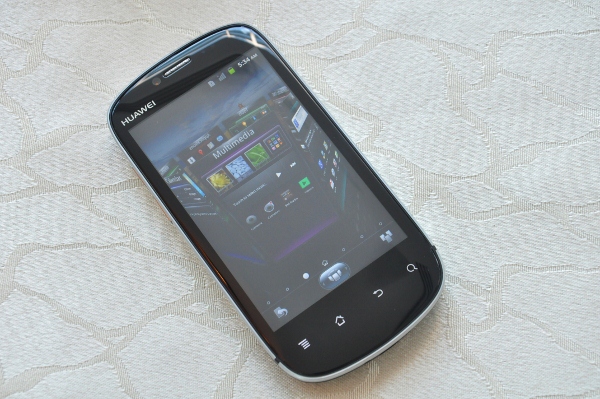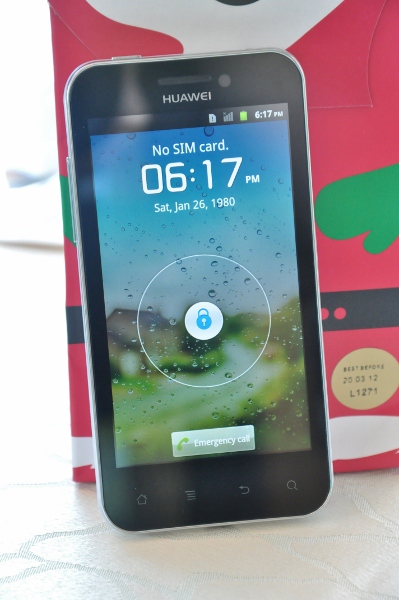
Huawei may be one of the top manufacturers of mobile broadband dongles, but the company is still the underdog in the Android smartphone arena. With two new low-cost devices just unleashed, will Huawei’s “vision” bring the company any “honor” in the smartphone battle?
Huawei Vision
If you think there’s no way a Chinese company can have the design chops to come up with a premium-looking phone, you’re in for a pleasant surprise.
The Vision’s fit and finish is excellent, and its smooth aluminium unibody design is reminiscent of HTC’s unibody looks, which feels great in the hand. The screen has a gentle curve that makes it really pleasant to swipe my finger across.
The 3.7-inch (800 x 480) LCD display is not going to make anyone’s jaws drop, but it looks fine and gets the job done. Turn the phone around and you’ll find a 5-megapixel camera with LED flash and 720p video recording.
Underneath that lies a 1GHz single core processor and 512 MB of RAM, and has the usual Wi-Fi and Bluetooth connectivity, assisted GPS, compass, accelerometer, G-sensor, proximity sensor, and light sensor. A micro SD card slot lets you expand the built-in storage of 2GB.
Unlike the Sonic, which has a pure, unadulterated Android experience, Huawei has slapped on a custom skin on top of the Vision’s Gingerbread experience, touting its customised rotating 3D interface which displays all your home screens in a fancy manner. However, discerning consumers will immediately recognise that as a slightly customised version of SPB Shell 3D which you can buy in the Android Market for S$18.95.
There might be nothing ground-breaking going on here, but the Vision is nothing to scoff at. In fact, the device snagged a prestigious iF Design Award, no mean feat for a new kid on the block. And at S$438, you can’t really argue against the price tag either.
Huawei Honor

The Honor, on the other hand, feels a little like another one of those cheap plastiky phones. It’s a bit disconcerting that the cheaper Vision feels more premium than the S$528 Honor. Still, there’s nothing much to complain about the Honor’s clean edges and sleek lines.
The Honor’s higher price compared to the Vision is due to its superior specs: it packs a 1.4GHz Scorpion processor, an 8-megapixel camera capable of 720p video, and a bigger 4-inch (854 x 480) screen.
Chief of all is the Honor’s large 1,900mAH battery, which the company claims is able to last up to 3 days on a single charge. We’re sure real-world usage will be much shorter, but it should still bring relief to heavy users who storm through their battery in less than a day.
The Honor’s skin looks like a weird offspring of iOS and Samsung’s TouchWiz interface. Beauty is strictly in the eye of the beholder here, and the interface looks a little too much like the iPhone. App folders, for one, behave exactly like on the iPhone: drag two icons together to create a tiny grid of little app icons within a frame. Tap the folder and a menu cascades down to reveal all the apps in the folder.
But there are nice things about the skin, such as an unlock interface which lets you jump straight into a pre-set app, such as email or calendar.
This seems like Huawei’s genuine attempt at a unique custom interface – instead of an adaptation of the SPB Shell 3D like on the Vision – but more work is definitely needed to distinguish itself from well-known brands like the HTC Sense.
CloudDrive
Huawei has an answer for iCloud and Microsoft’s SkyDrive, too. Called CloudDrive, the app will first be available for the Honor, and there’s no word whether other Huawei smartphones will get it.
CloudDrive offers an impressive 16GB of free storage, and will let users share their files in the cloud. It seems like a back-up and sharing tool only for the time being, as the company also had nothing to say on whether music and movies can be streamed.
CloudDrive will come via a software update by the end of Q1 2012.
Bottom-line
With an Ice Cream Sandwich update promised for both the Vision and Honor, Huawei looks set to become a serious Android contender.
However, other companies like Samsung and HTC have their own low-cost devices too, and Huawei will need to bring out its marketing muscle if it is to break out of the “cheapo China company” stigma.
The two phones might not bring anything new to the table, but the fact that they’re able to hold their own despite the Huawei’s late entry to the market makes us pretty excited at what the company might bring next year.




